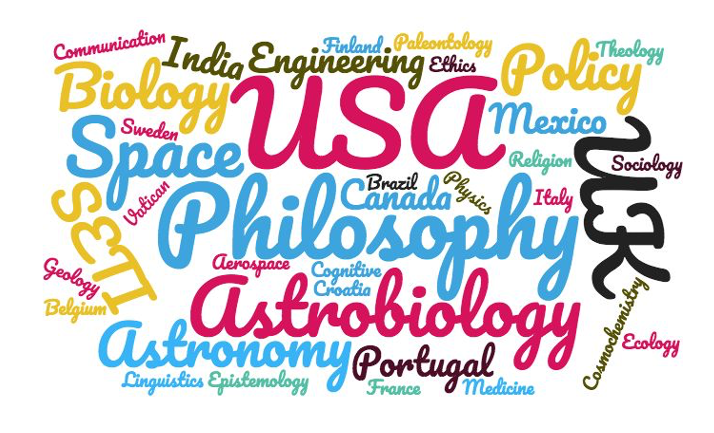
Planetary protection: an idea whose time is gone?
Loading...
Start Date
15-12-2020 11:30 AM
End Date
15-12-2020 11:50 AM
Description
The U.S. National Aeronautics and Space Administration (NASA) has a planetary protection policy in place that is intended to keep the United States in compliance with the 1967 United Nations Treaty on Principles Governing the Activities of States in the Exploration and Use of Outer Space, including the Moon and Other Celestial Bodies (a.k.a. the Outer Space Treaty) – specifically, Article IX. This article specifies: “States Parties to the Treaty shall pursue studies of outer space, including the Moon and other celestial bodies, and conduct exploration of them so as to avoid their harmful contamination and also adverse changes in the environment of the Earth resulting from the introduction of extraterrestrial matter and, where necessary, shall adopt appropriate measures for this purpose.” Compliance with NASA planetary protection policy is mandatory. NASA estimates that compliance accounts for about 10 percent of a mission’s cost. (COSPAR – the international Committee on Space Research – has a parallel planetary protection policy in place, compliance with which is voluntary.) At the same time that astrobiologists are intent upon exploring multiple environments in our solar system that they deem potentially habitable – Mars, Europa, Enceladus, and Titan – human-exploration advocates, inside and outside NASA, continue to argue, as they have for years, that planetary protection requirements are unnecessarily restrictive. This critique has gained traction since President Trump was elected, and has been further propelled by Trump’s advocacy for returning humans to the Moon and then sending them on to Mars. Adding further to arguments against planetary protection requirements is Elon Musk’s proposal to independently send people to Mars. In 2018, NASA established a new Regulatory and Policy Committee of its NASA Advisory Council. The primary topic for its first meeting was planetary protection policy. Committee chair Mike Gold is a well known critic of planetary protection requirements. In 2019, NASA established a Planetary Protection Review Board, chaired by planetary scientist Alan Stern, which is intended “to review established guidelines for planetary protection and recommend any updates that are required.” By the time of SSoCIA 2020, there may be news to report on the activities of this new board. This paper will address arguments for stringent planetary protection requirements – to preserve pristine extraterrestrial environments for astrobiological exploration – and arguments against, coming down on the side of preserving pristine environments from the perspective of scientific value and environmental ethics.
Recommended Citation
Billings, Linda, "Planetary protection: an idea whose time is gone?" (2020). Society for Social and Conceptual Issues in Astrobiology (SSoCIA) Conference. 19.
https://egrove.olemiss.edu/ssocia/2020/schedule/19
Planetary protection: an idea whose time is gone?
The U.S. National Aeronautics and Space Administration (NASA) has a planetary protection policy in place that is intended to keep the United States in compliance with the 1967 United Nations Treaty on Principles Governing the Activities of States in the Exploration and Use of Outer Space, including the Moon and Other Celestial Bodies (a.k.a. the Outer Space Treaty) – specifically, Article IX. This article specifies: “States Parties to the Treaty shall pursue studies of outer space, including the Moon and other celestial bodies, and conduct exploration of them so as to avoid their harmful contamination and also adverse changes in the environment of the Earth resulting from the introduction of extraterrestrial matter and, where necessary, shall adopt appropriate measures for this purpose.” Compliance with NASA planetary protection policy is mandatory. NASA estimates that compliance accounts for about 10 percent of a mission’s cost. (COSPAR – the international Committee on Space Research – has a parallel planetary protection policy in place, compliance with which is voluntary.) At the same time that astrobiologists are intent upon exploring multiple environments in our solar system that they deem potentially habitable – Mars, Europa, Enceladus, and Titan – human-exploration advocates, inside and outside NASA, continue to argue, as they have for years, that planetary protection requirements are unnecessarily restrictive. This critique has gained traction since President Trump was elected, and has been further propelled by Trump’s advocacy for returning humans to the Moon and then sending them on to Mars. Adding further to arguments against planetary protection requirements is Elon Musk’s proposal to independently send people to Mars. In 2018, NASA established a new Regulatory and Policy Committee of its NASA Advisory Council. The primary topic for its first meeting was planetary protection policy. Committee chair Mike Gold is a well known critic of planetary protection requirements. In 2019, NASA established a Planetary Protection Review Board, chaired by planetary scientist Alan Stern, which is intended “to review established guidelines for planetary protection and recommend any updates that are required.” By the time of SSoCIA 2020, there may be news to report on the activities of this new board. This paper will address arguments for stringent planetary protection requirements – to preserve pristine extraterrestrial environments for astrobiological exploration – and arguments against, coming down on the side of preserving pristine environments from the perspective of scientific value and environmental ethics.

